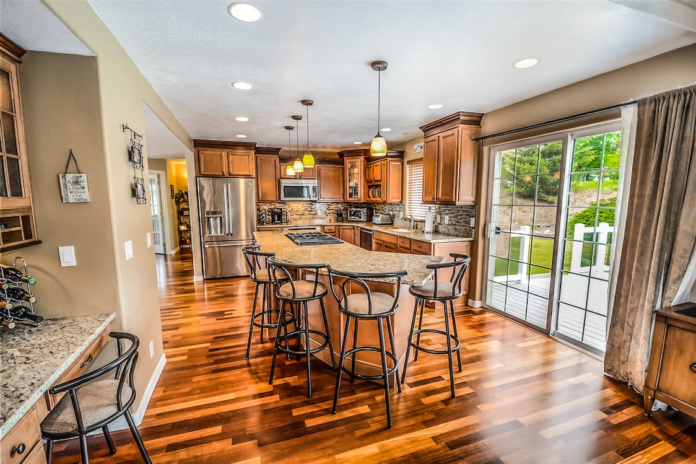Introduction
Flooring is an essential aspect of any home, as it not only provides a surface to walk on but also contributes to the overall aesthetic and ambiance of a space. With so many flooring options available, it can be challenging to choose the right one for your home. In this article, we will explore the benefits, types, costs, installation, and maintenance of hardwood flooring.

Introduction to Hardwood Flooring
Hardwood flooring is a type of flooring made from solid wood or engineered wood planks. It has been used for centuries and is known for its durability and timeless beauty. Hardwood flooring is a popular choice for homeowners because it adds warmth and character to any room.
The history of hardwood flooring dates back to the 1600s when it was first used in European castles and mansions. It became popular in America in the 1800s when sawmills began producing planks of hardwood for use in homes. Today, hardwood flooring is still a popular choice for homeowners due to its durability and aesthetic appeal.
When compared to other types of flooring such as carpet or tile, hardwood flooring offers several advantages. It is easier to clean, does not trap allergens or dust, and can last for decades with proper care.
Benefits of Hardwood Flooring
One of the main benefits of hardwood flooring is its durability and longevity. Hardwood floors can withstand heavy foot traffic and are resistant to scratches and dents. They also have a long lifespan, with some floors lasting over 100 years with proper care.
Another benefit of hardwood flooring is its aesthetic appeal and design options. Hardwood floors come in a variety of colors, patterns, and textures that can complement any home decor style. They also add warmth and character to a space that cannot be replicated by other types of flooring.
Hardwood flooring can also increase the value of your home. Homes with hardwood floors are often more desirable to buyers and can sell for a higher price than homes with other types of flooring.
Finally, hardwood flooring can improve indoor air quality. Unlike carpet, which can trap allergens and dust, hardwood floors do not harbor these particles, making them a healthier choice for those with allergies or respiratory issues.
Types of Hardwood Flooring
There are several types of hardwood flooring to choose from, each with its own unique characteristics and benefits.
- Solid hardwood flooring is made from a single piece of wood and is the most traditional type of hardwood flooring. It is durable and can be sanded and refinished multiple times, making it a long-lasting option.
- Engineered hardwood flooring is made from layers of wood that are glued together. It is more stable than solid hardwood and can be installed in areas with high humidity or moisture levels.
- Exotic hardwood flooring is made from wood species that are not native to North America. These woods offer unique colors and patterns that cannot be found in domestic hardwoods.
- Reclaimed hardwood flooring is made from salvaged wood from old buildings or structures. It offers a rustic look and is an eco-friendly option for those who want to reduce their environmental impact.
Cost of Hardwood Flooring
The cost of hardwood flooring varies depending on several factors, including the type of wood, the quality of the wood, and the installation method. On average, solid hardwood flooring can cost between $4-$12 per square foot, while engineered hardwood can cost between $3-$13 per square foot.
While hardwood flooring may be more expensive than other types of flooring such as carpet or vinyl, it offers a long lifespan and can increase the value of your home.
Installation of Hardwood Flooring
Proper preparation and planning are essential when installing hardwood flooring. Before installation, the subfloor must be clean, level, and dry. The installation process can be done by a professional or as a DIY project for those with experience.
The installation process involves several steps, including measuring and cutting the planks, laying the planks in a staggered pattern, and securing them to the subfloor. The process can take several days to complete, depending on the size of the room.
Maintenance of Hardwood Flooring
Proper maintenance is essential to keep hardwood flooring looking its best. Regular cleaning and upkeep can prevent scratches and damage. Preventative measures such as using rugs or furniture pads can also protect the floors from wear and tear.
If damage does occur, hardwood floors can be repaired or refinished. Minor scratches can be sanded out, while deeper scratches or dents may require replacement of the affected planks.
Conclusion
Hardwood flooring is a durable and timeless option for any home. With its aesthetic appeal, long lifespan, and health benefits, it is a popular choice for homeowners. By understanding the types, costs, installation, and maintenance of hardwood flooring, you can make an informed decision about whether it is the right choice for your home.


